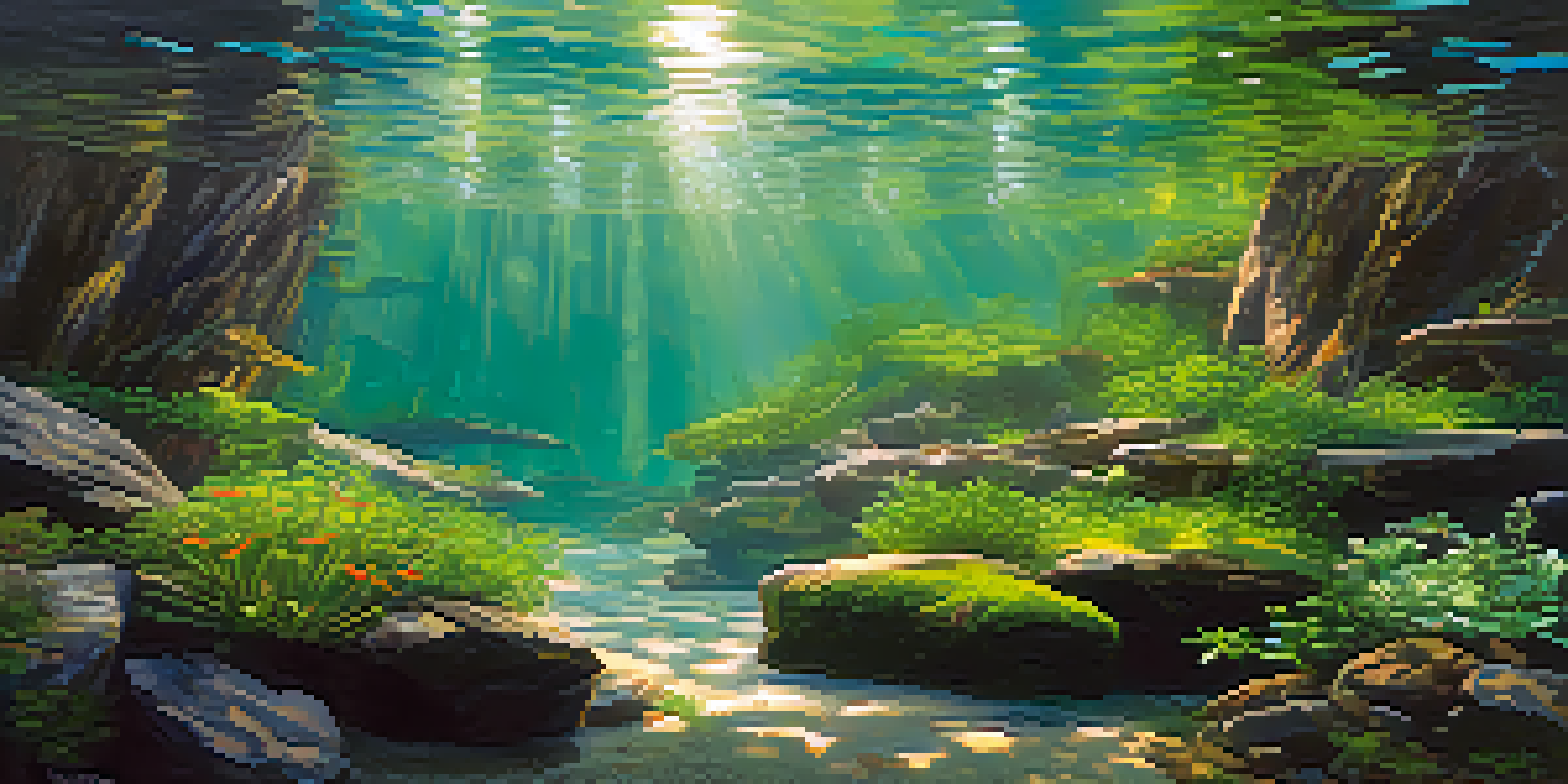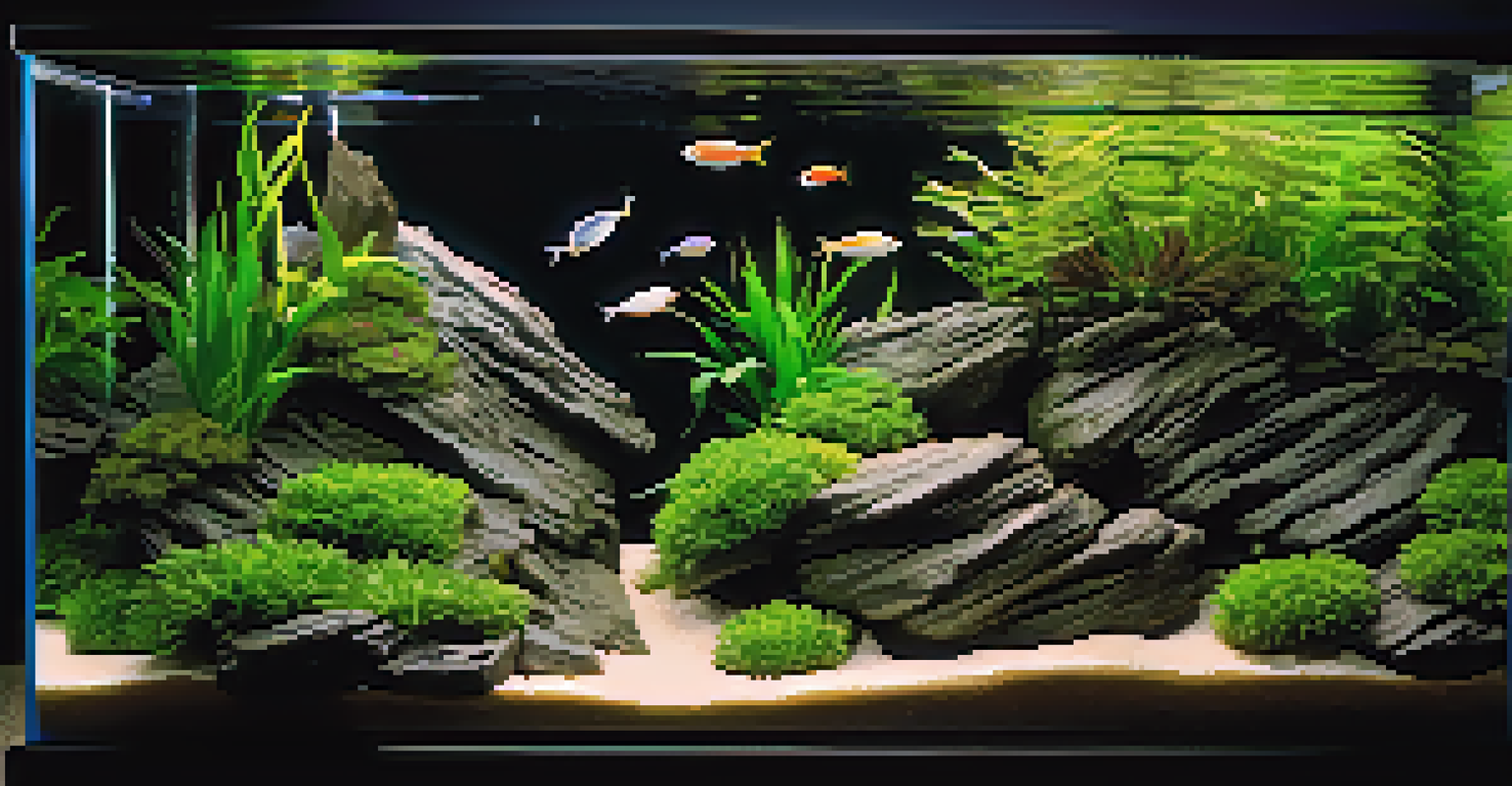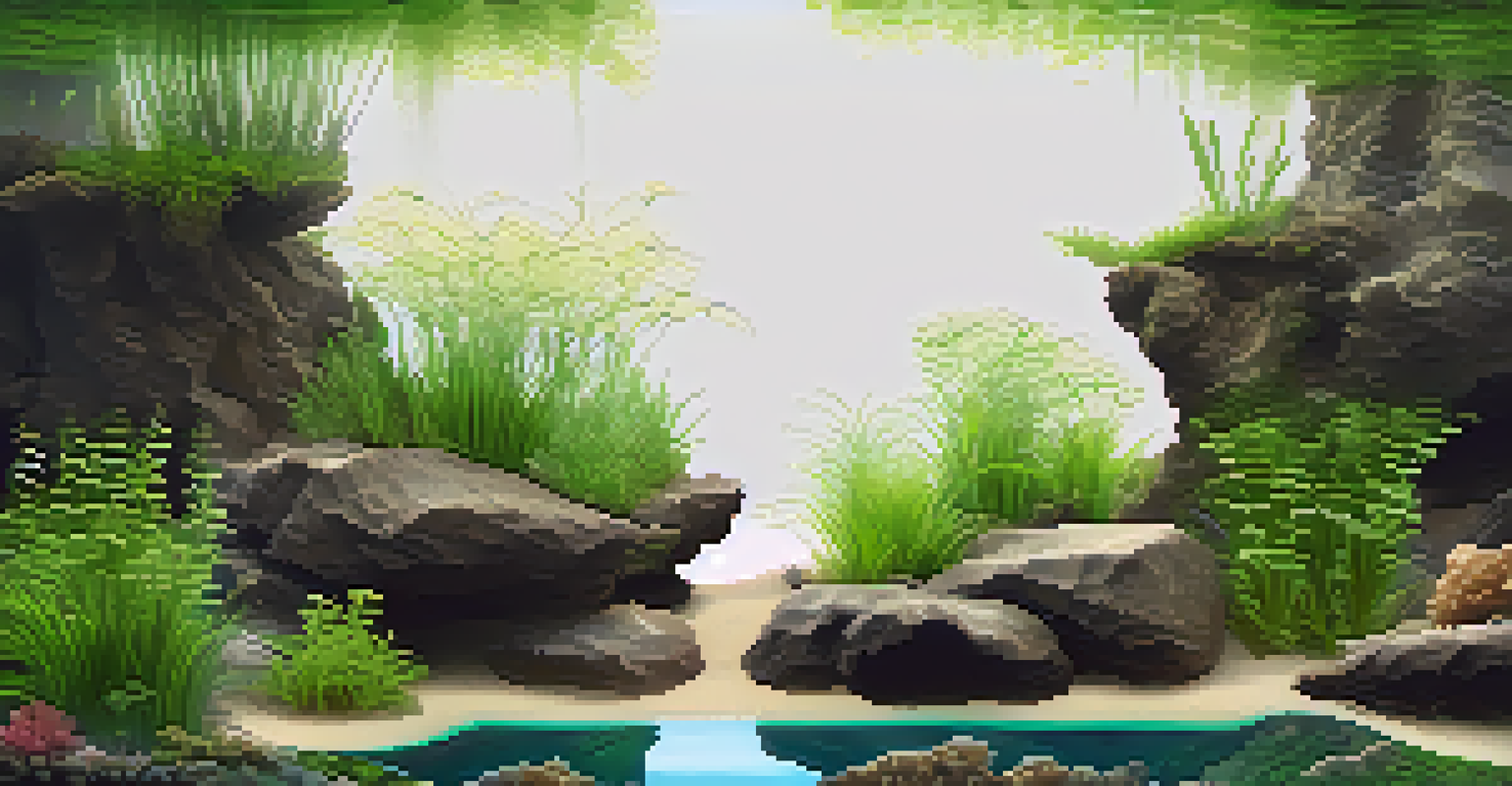Aquascaping Hardscape: Rocks and Driftwood Selection

Understanding Aquascaping Hardscape Elements
Aquascaping is an art form that combines aquatic plants, fish, and decorative features like rocks and driftwood. The hardscape elements serve as the backbone of your underwater landscape, creating structure and depth. Choosing the right materials is crucial for achieving balance and harmony in your aquarium design.
The beauty of the underwater world is that it can be a reflection of our own creativity and passion.
When selecting hardscape elements, consider how they will interact with the aquatic life and plants you plan to include. Rocks can provide hiding spots for fish, while driftwood can create natural-looking environments. Both elements should complement each other and contribute to the overall aesthetics of your aquascape.
Remember that hardscape choices can influence water chemistry, so be mindful of the materials you use. Some stones may leach minerals into the water, affecting its quality. Researching each element's properties will help you create a thriving ecosystem.
Choosing the Right Rocks for Your Aquascape
Rocks are a fundamental component of aquascaping, but not all rocks are created equal. Popular choices include granite, slate, and limestone, each bringing unique textures and colors to your design. It's essential to select rocks that align with the aesthetic you want to achieve while ensuring they are safe for your fish and plants.

When incorporating rocks, think about their size and arrangement. Larger boulders can serve as focal points, while smaller stones can fill in gaps and create a balanced look. Stacking rocks can add height and dimension, but be cautious of stability to prevent landslides within your aquarium.
Choose Hardscape for Balance
Selecting the right rocks and driftwood is essential to create a harmonious and functional aquascape that supports aquatic life.
Additionally, consider the natural habitat of your fish when selecting rocks. Some species thrive in rocky environments, while others prefer sandy substrates. Matching the rock types to your fish's needs will create a more comfortable and inviting space for your aquatic friends.
Exploring Driftwood Options for Aquascaping
Driftwood adds a unique organic touch to your aquascape, creating a sense of depth and natural beauty. Common types of driftwood include Malaysian, spider wood, and mopani, each with its distinct shape and texture. The right driftwood can enhance the overall appearance of your aquarium while providing hiding spots for fish.
Nature does not hurry, yet everything is accomplished.
When selecting driftwood, consider its size and how it will fit into your aquascape. Larger pieces can act as central features, while smaller twigs can add subtle details. Remember to soak the driftwood before adding it to your tank to remove tannins, which can discolor the water.
Driftwood also plays a role in maintaining water quality by providing surfaces for beneficial bacteria to colonize. This natural filtration can help keep your aquarium healthy, making driftwood not only an aesthetic choice but a functional one as well.
Balancing Aesthetics and Functionality in Hardscape
While aesthetics are important in aquascaping, functionality should never be overlooked. Your hardscape elements should not only look good but also provide a suitable habitat for your aquatic life. Striking the right balance ensures that your fish feel secure and your plants thrive.
Consider how light penetrates your aquascape. Rocks and driftwood can create shadows and highlight areas that will influence plant growth. A well-thought-out arrangement can facilitate better light distribution, promoting a healthy underwater garden.
Maintain Your Aquascape Regularly
Consistent maintenance of hardscape elements helps prevent algae buildup and keeps your aquarium visually appealing.
Don't forget about accessibility when planning your hardscape. Make sure you can easily maintain the aquarium, as plants may need trimming, and debris may need to be removed. A functional design will save you time and effort in the long run.
Incorporating Natural Elements for Authenticity
To create a truly authentic aquascape, consider incorporating natural elements that mimic the fish's native habitat. This approach not only enhances the visual appeal but also promotes the well-being of your aquatic life. Natural-looking aquascapes can provide a sense of security for your fish, reducing stress levels.
Consider using a mix of different rock types and driftwood shapes. This variety can create a more dynamic and lifelike environment, often resembling the underwater landscapes found in nature. By mimicking these habitats, you can foster a more enriching experience for your fish.
Additionally, adding substrate materials such as gravel or sand can further enhance the natural feel of the aquascape. Layering these materials with rocks and driftwood provides a multi-dimensional landscape that invites exploration and interaction from your aquatic inhabitants.
Maintaining Your Hardscape for Longevity
Once you've selected and arranged your hardscape, maintaining it is crucial for the longevity of your aquascape. Regular maintenance will help prevent algae buildup and ensure that your rocks and driftwood remain visually appealing. A little effort goes a long way in preserving the beauty of your aquarium.
Be proactive in monitoring water parameters and performing regular water changes. This will not only benefit your fish and plants but also keep your hardscape looking its best. Over time, you may need to remove and clean rocks or driftwood to prevent any unwanted growth.
Draw Inspiration from Nature
Observing natural aquatic environments can inspire your aquascaping designs and help you create a more authentic habitat for your fish.
Finally, be prepared for changes over time. As your plants grow and your aquarium matures, you may want to adjust your hardscape to accommodate new life. Embracing change can lead to exciting new designs and a thriving aquatic environment.
Inspiration from Nature: Learning from Natural Aquascapes
One of the best ways to improve your aquascaping skills is by drawing inspiration from nature. Observing natural bodies of water, like rivers and lakes, can provide insights into how rocks and driftwood naturally interact. Photographs and videos of these environments can spark creativity and help you envision your own aquascape.
Consider visiting local aquariums or botanical gardens to see how professionals use hardscape elements in their designs. This exposure can inspire you to experiment with different styles and arrangements in your own aquarium setup. Don't hesitate to take notes or snap pictures for reference.

Remember that every aquascaper develops their unique style over time. Allow nature to guide you, but also trust your instincts and creativity. The more you practice and explore, the more confident you'll become in your hardscape choices.